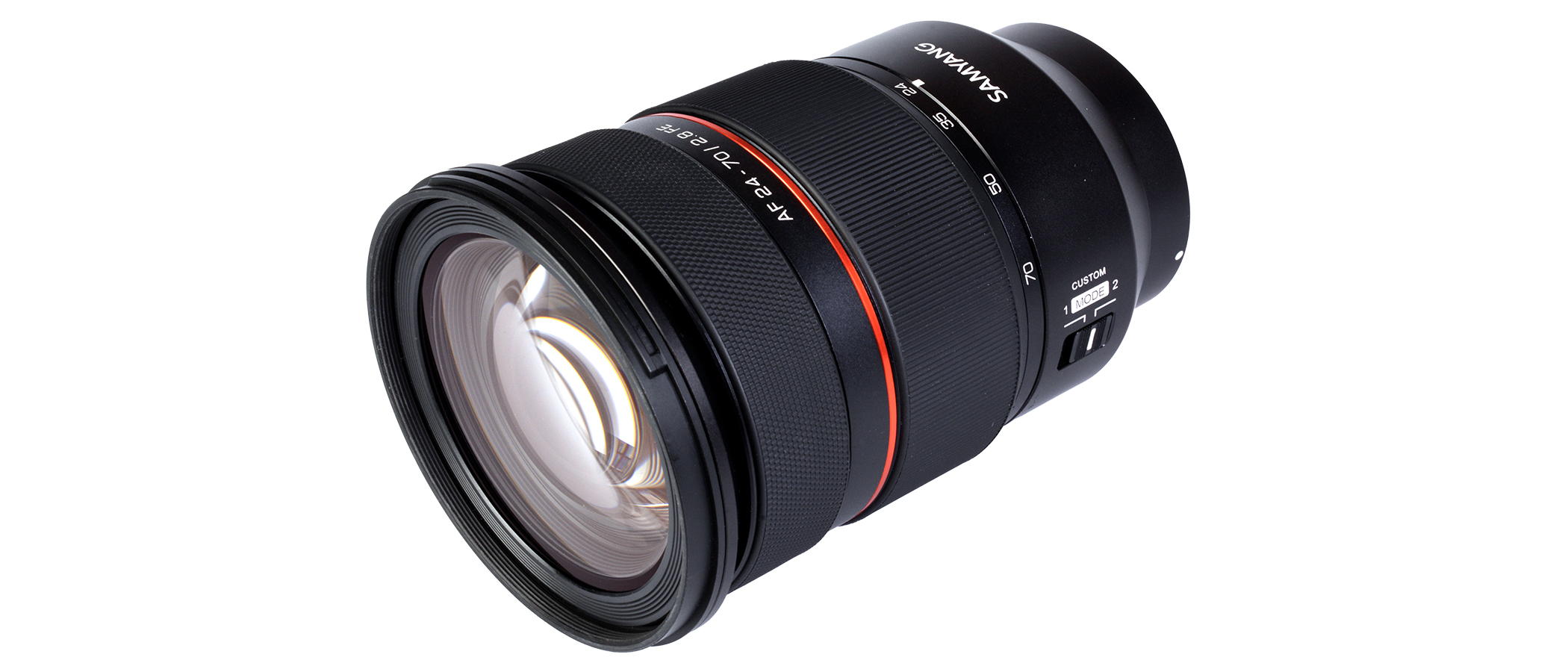Early Verdict
Samyang has already made some pretty tasty AF primes in the FE mount, but its first zoom is a bold statement of intent, especially as the f/2.8-speed 24-70mm leaves nowhere to hide, as very high performance standards have already been set. Samyang has made the grade here, and that’s very good news for Sony Alpha shooters who might like a premium 24-70mm f/2.8 zoom that’s not quite such a big hit financially.
Pros
- +
Near-flawless performance
- +
Robust build
- +
Well priced
Cons
- -
Heavy beast
- -
More than expected distortion
Why you can trust Digital Camera World
With its recent string of autofocus primes – mostly for Sony’s FE/E mount – Samyang has established itself as a mainstream contender in what is now a very competitive market: lenses for mirrorless cameras. So it makes sense that Samyang should take the next step and build its first autofocus zoom lens in the mirrorless era... and also its first 24-70mm f/2.8 model. It arrives in time to celebrate the company’s 50th anniversary of its founding in 1972.
Yep, Samyang is 50, but there are plenty of photographers – and videographers – just discovering what the South Korean lens maker is capable of. It flew under the radar for quite a while, but its manual focus primes – representing massive value for money given their performance and price – have earned it a loyal following among those who did discover the brand... often by accident.
Now, aided by a proactive distributor in Australia, Samyang is stepping up against the better-known Japanese independent brands in our market, and the seemingly never-ending parade of new Chinese lens makers. Many of the latter are also competing mostly on price, but Samyang also now has a solid reputation for both optical performance and excellent build quality behind it.
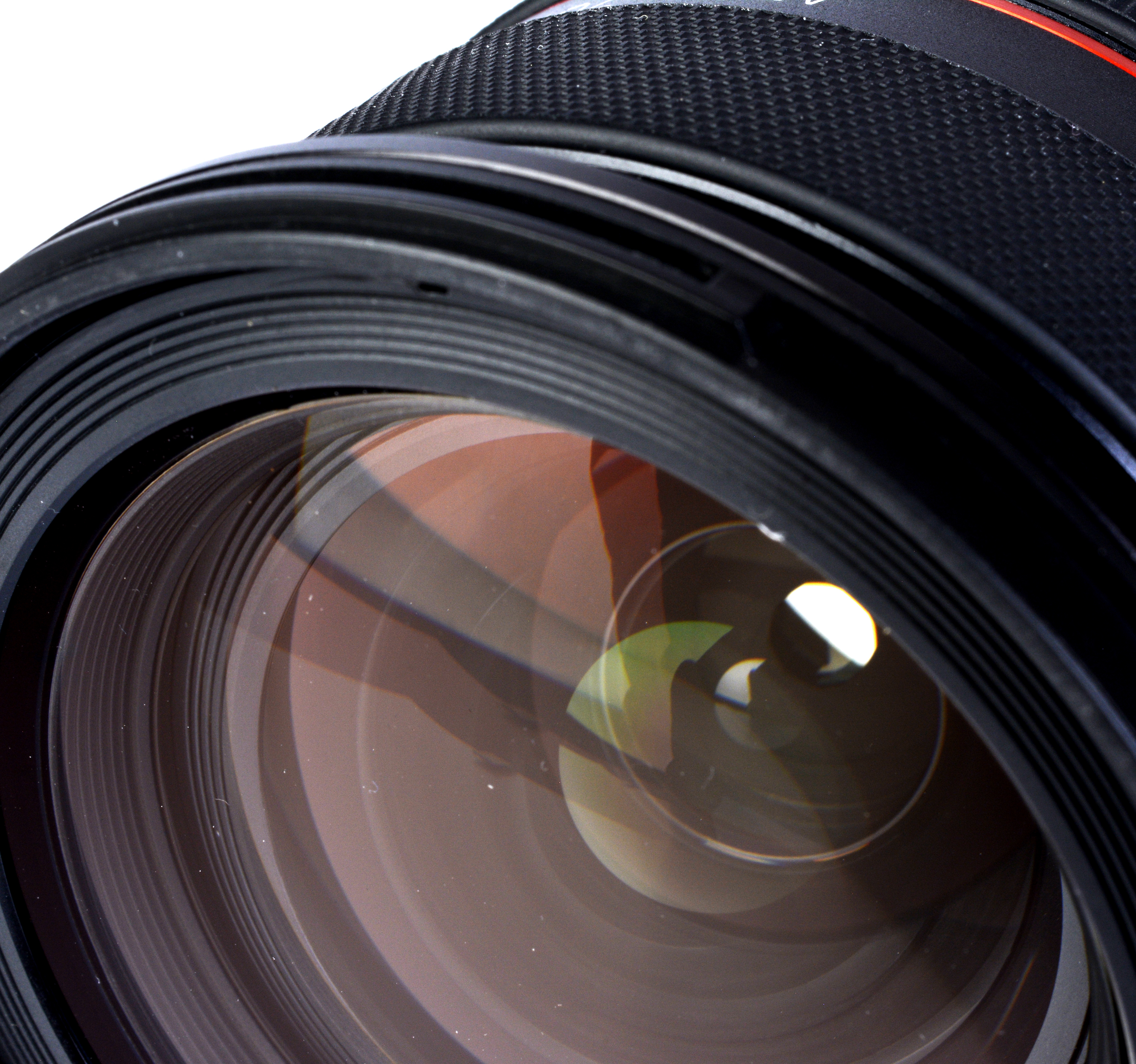
Both are very evident in the AF 24-70mm f/2.8 FE, which is almost Zeiss-like in its heft – it’s a weighty beast at a shade over a kilo – and the precision of its fit and finish. It looks expensive, so the AU$1,499 price tag is a pleasant surprise – especially when Sony’s own FE 24-70mm f/2.8 G Master model is AU$2,999. The A-mount Zeiss Vario-Sonnar 24-70mm f/2.8 ZA SSM zoom is now discontinued, but when you could buy one, it would set you back AU$2,699. Probably a more interesting price comparison is with Sigma’s 24-70mm f/2.8 DG DN Art, which currently has a recommended retail of AU$2,099. If you were thinking of buying something other than the ‘house brand’ Sony 24-70mm standard zoom, the Sigma would almost certainly be on your shopping list... and so should the Samyang.
Specifications
Lens mount(s): Sony FE
Format: Full frame
Angle-of-view: 53.0-86.0 degrees (diagonal on full frame)
Construction: 17 elements/14 groups
Minimum focus: 35cm
Maximum reproduction ratio: 1:3.7 (at 70mm)
Aperture range: f/2.8 to f/22
Overall length: 128.5mm
Maximum diameter: 88.mm
Filter diameter: 82mm
Weight: 1,027g (without lens hood)
Design & handling
At 1.027kg, it feels like a lot of lens in your hand, and the external construction comprises all-metal barrel tubes with a stainless steel lens mount. The weather sealing comprises six internal seals and a beefy rubber gasket around the lens mount. The zooming collar needs a substantial shove to get it moving, but this inertia also means that you’re able to be very precise with framing. There’s definitely no need for a zoom lock here.
The focusing collar is fly-by-wire and is actually multi-function – its role determined by the Custom Mode switch on the side of the barrel. Out of the box, the two mode settings are for manual focus and manual aperture setting, but Samyang says that more options will be added with future firmware upgrades, presumably similar to the multi-function collars on Canon RF and Nikkor Z lenses.
On the inside, the Samyang 24-70mm zoom’s optical construction employs 17 elements in 14 groups, including a total of nine special types to provide various types of correction. The specials line-up comprises three aspherical elements – one a super- strength H-ASP type, three high refractive (HR) types, and three with extra-low dispersion (ED) characteristics.
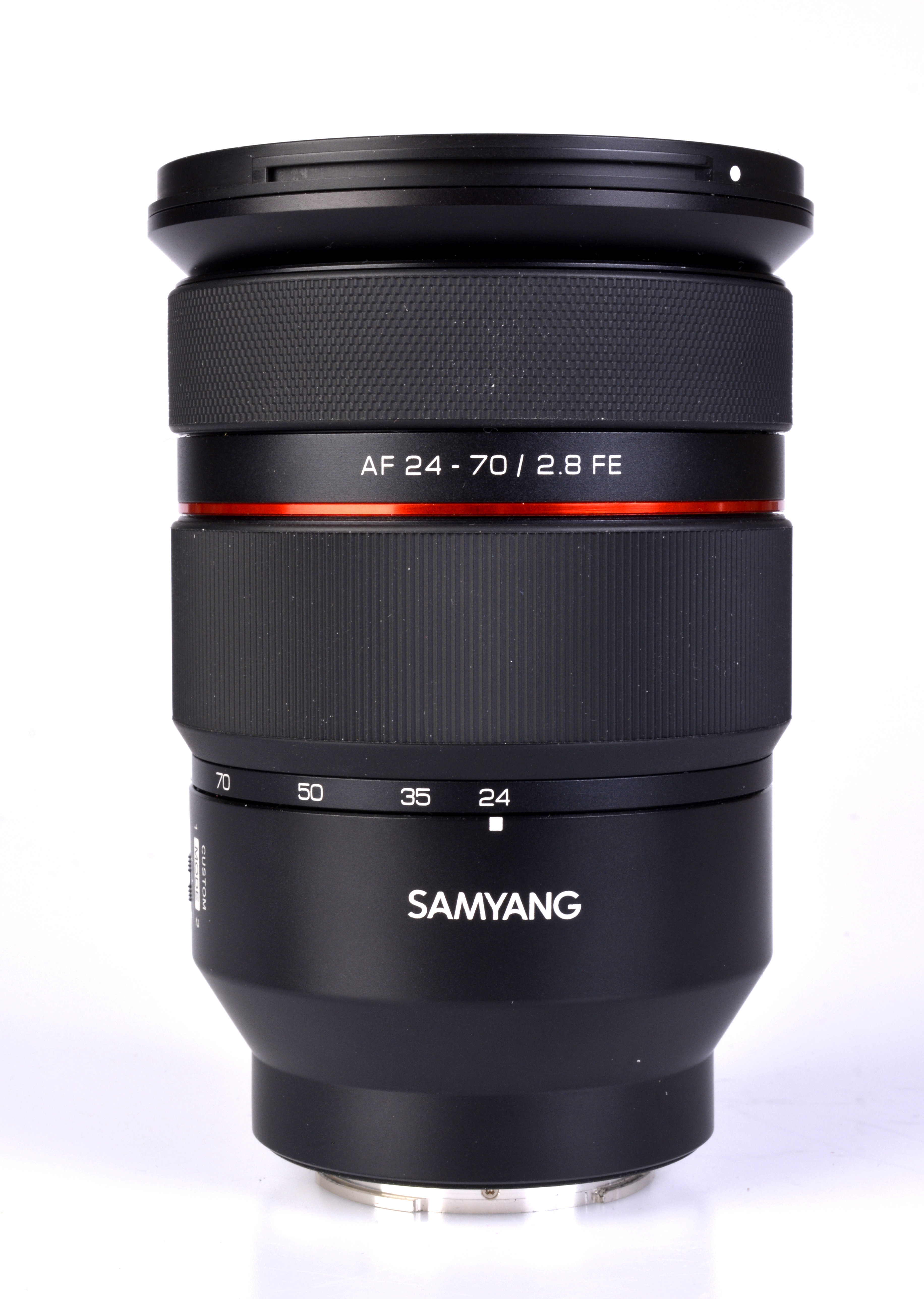
An interesting aspect of the optical design is that it’s parfocal, which means that the set focus doesn’t change during zooming. It’s achieved via a complex internal arrangement that moves the focusing group to compensate for the changes in image size happening with zoom, but maintains a manually- set focus point. It’s a feature for videographers – and usually only found on much pricier cinema lenses – and Samyang is very much targeting this lens at these users.
There’s also an optional cine kit for the lens that comprises a dedicated follow focus gear ring and adjuster with a tripod mount. To make follow focus actually work, the focus collar operates linearly – in other words, the focusing changes in relation to the angle of rotation of the focus collar and not the speed at which it is turned, so the amount of focus change is always the same. And, in the manual aperture mode, you get seamless adjustments that are completely silent too.
Autofocusing is via a linear stepping motor (STM), another concession to video-makers, as it’s both smoother and quieter. The minimum focusing distance is 35cm, which is maintained across the zooming range so, at 70mm, the magnification ratio is 1:3.7. The minimum aperture is f/22 and the diaphragm has nine blades to give rounder, smoother out-of-focus effects.
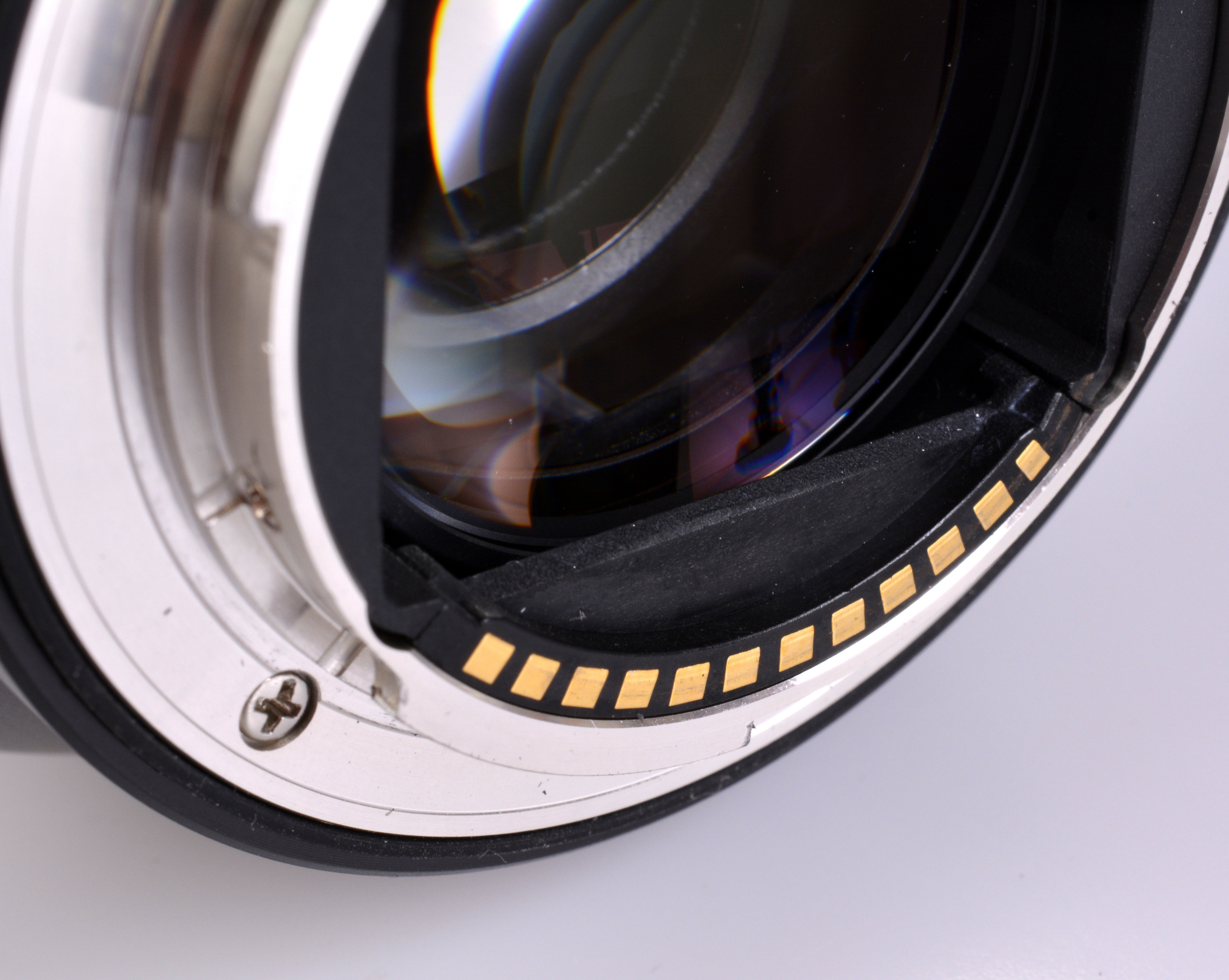
While Samyang now has a fairly extensive line of dedicated cinema lenses, these are all primes, so obviously the new zoom is a first for everybody and it’s been designed to have appeal for both applications. Historically, it was cinematographers discovering the value aspect of Samyang’s manual focus primes for photography – and talking about them – that started to get the brand more widely known. Similarly, Samyang made a number of mid-range AF zoom lenses in the 1980s for Nikon, Pentax and Minolta 35mm SLRs (the latter, of course, becoming Sony’s A mount).
Performance
The lens mount sports the 12 contacts needed to provide the full interface with Sony Alpha series mirrorless cameras. These include eye/face detection and the DMF (Direct Manual Focus) function that provides a full-time manual override of the autofocusing (but obviously the control collar needs to be in manual focus mode). It also supports Sony’s in-camera corrections for vignetting, chromatic aberrations, and distortion, but the lens is also very well corrected for these optically.
The Samyang 24-70mm f/2.8 zoom excels in its sharpness, with centre-to-corner uniformity well-maintained across both the zooming range and the aperture range. There is a slight fall-off at 24mm and f/2.8, but it’s truly minimal and the Samyang lens undoubtedly performs competitively here with its pricier rivals.



In a nutshell, the zoom’s sharpness is very hard to fault and it’s also nicely contrasty without overdoing it. The sensor’s contribution notwithstanding, there’s great definition with lots of crisply-resolved detail. There’s real depth to the rendering too, and the smoothness of the transition from in-focus to out-of-focus is the mark of high quality optics.
Vignetting is completely non- existent – even at 24mm and f/2.8 – and lateral chromatic aberration is very effectively minimised indeed. Some longitudinal (or axial) chromatic aberration is noticeable along the higher contrast edges, but only when the image is significantly magnified. However, as far as stills are concerned, it’s effectively dealt with by Sony’s in-camera corrections (we tested the lens on the A7 III).
Consequently, distortion is the only area where the Samyang zoom doesn’t score a straight A. There’s some quite noticeable barrel-type distortion at 24mm, although it’s gone by 28mm, replaced by slight pincushion-type bending at 50mm and beyond. Of course, both can be corrected post-camera, but there’s always some slight cropping involved in the process.



Samyang’s UMC – Ultra Multi-Coating – anti-reflection coatings do a good job of suppressing both ghosting and flare, but strong sunlight bouncing across the large-diameter front element will require the deeply sculpted hood that’s supplied with the lens in order to maintain contrast. This large diameter also means a 82mm screwthread fitting, so take a deep breath when preparing to buy, for example, a circular polariser. Mind you, this is a lens that's probably better suited to a 100mm filter holder system.
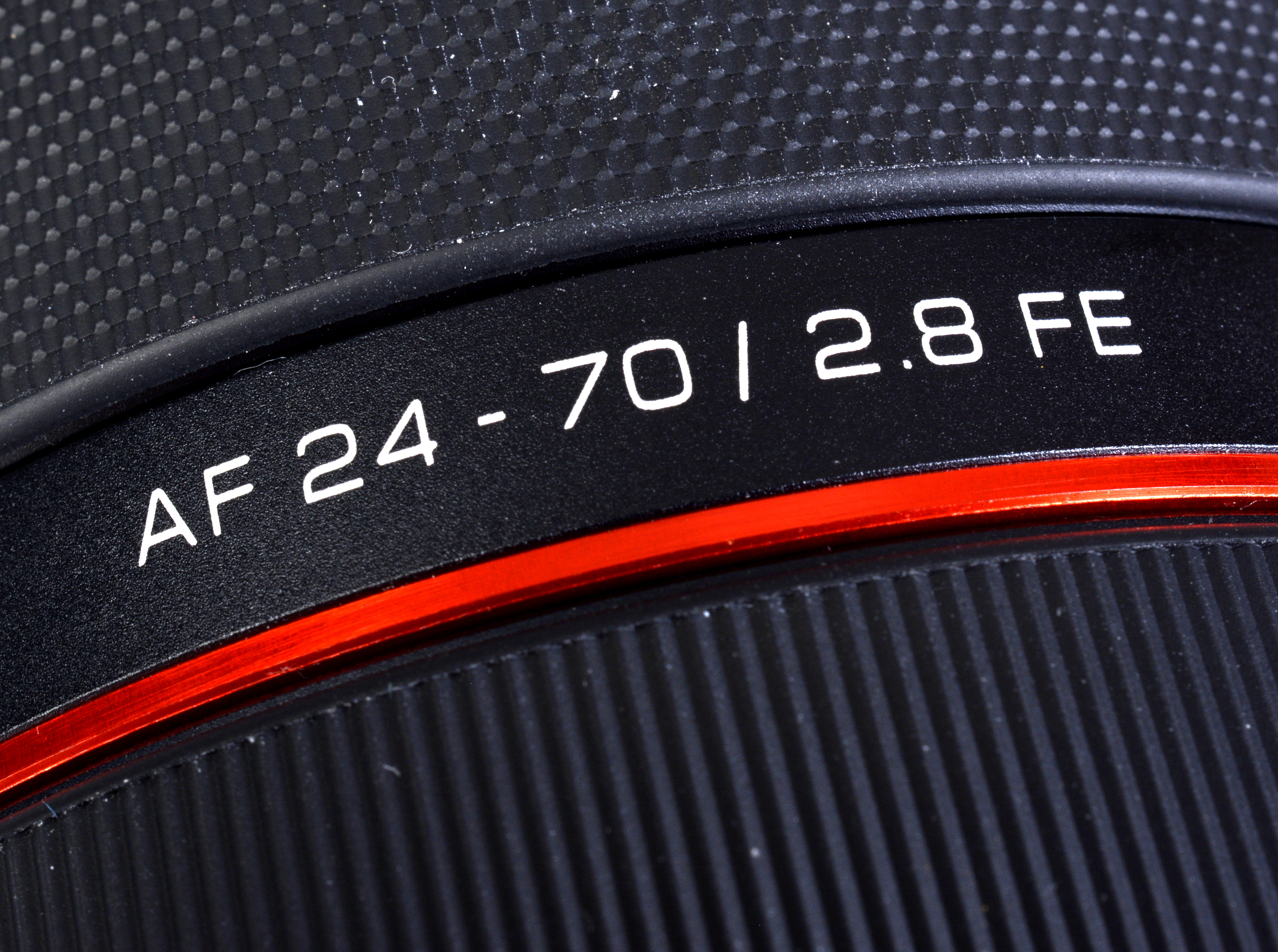
Verdict
In the past, Samyang lenses have been celebrated for their difference; for a long time being only fully manual primes, but very good ones optically and selling at very affordable prices. Now there’s a myriad of Chinese brands muscling in on that territory, some with even lower-priced products, which is probably why Samyang has decided to move itself much more into the mainstream, first with AF primes and now with its first AF zoom for mirrorless. This is bringing it directly up against heavy-hitters such as Sigma and Tamron, as well as the camera brands themselves, but the new AF 24-70mm f/2.8 FE suggests it’s everybody else who should be worried, not Samyang.
This is undoubtedly a premium lens in terms of its construction and finish, and the only bum note in an otherwise exceptional optical performance is the amount of barrel distortion at 24mm. It won’t be an issue with subjects such as landscapes, or even portraits, but you will notice it if there are any straight lines in a scene that are located close to the image edges. It’s unlikely to be a deal breaker given that the Samyang does everything else so well, and the price tag is very hard to go past.
Samyang has already made some pretty tasty AF primes in the FE mount, but its first zoom is a bold statement of intent, especially as the f/2.8-speed 24-70mm
leaves nowhere to hide, as very high performance standards have already been set. Samyang has made the grade here, and that’s very good news for Sony Alpha shooters who might like a premium 24-70mm f/2.8 zoom that’s not quite such a big hit financially. Let’s hope Samyang spreads the joy to other full-frame mirrorless mounts before too long.
Read more:
• Best camera lenses to get
• Best Canon lenses
• Best Nikon lenses
• Best Sony lenses

Paul has been writing about cameras, photography and photographers for 40 years. He joined Australian Camera as an editorial assistant in 1982, subsequently becoming the magazine’s technical editor, and has been editor since 1998. He is also the editor of sister publication ProPhoto, a position he has held since 1989. In 2011, Paul was made an Honorary Fellow of the Institute Of Australian Photography (AIPP) in recognition of his long-term contribution to the Australian photo industry. Outside of his magazine work, he is the editor of the Contemporary Photographers: Australia series of monographs which document the lives of Australia’s most important photographers.
